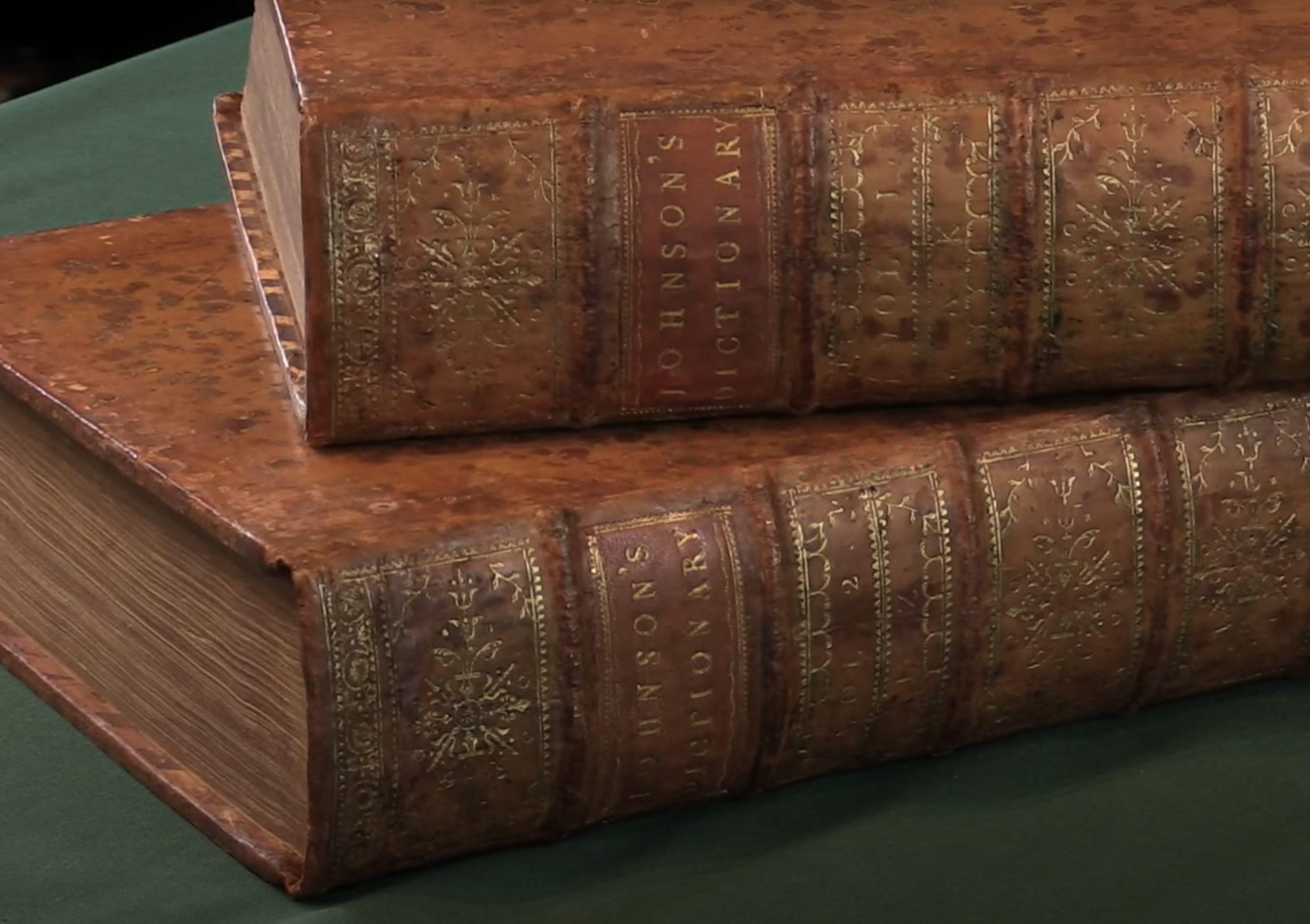https://youtube.com/watch?v=W1pxN6SX6dM
A Dictionary of the English Language, Samuel Johnson. First Edition London: by W. Strahan, for J. and P. Knapton; T. and T. Longman; C. Hitch and L. Hawes; A. Millar; and R. and J. Dodsley, 1755.
You can view our first edition of the Dictionary of the English Language here.
Presented by Sammy Jay, Rare Books Specialist at Peter Harrington Rare Books.
2 volumes, folio (400 × 254 mm). Contemporary spotted full calf, spines elaborately gilt-tooled in compartments with raised bands and tan title labels, red speckled edges.Title page in red and black. Armorial bookplates of W. T. Salvin Esq, of Croxdale Hall, to both copies. Restoration to joints and hinges, some rubbing, small scratches and dents to spine and sides, residual red wax seals to both pastedowns, partial offset tanning from turn-ins, light spotting to some endleaves, leaves lightly cockled throughout but on the whole internally rather fresh, and generally a handsome copy in very good condition.
First edition of this most famous of English dictionaries, in an extremely handsome contemporary binding. The creation of the dictionary was Johnson’s greatest literary labour.
Helped by a succession of needy amanuenses who worked in the surprisingly spacious garret of his house in Gough Square, he experienced the death of his mother and underwent agonies of procrastination before finally completing the task in his 46th year. Boswell called it a work of “superior excellence” and “much greater mental labour, than mere Lexicons, or Word Books as the Dutch call them” (Life of Johnson: An Edition of the Original Manuscript. Vol I: 1709–1765, ed. Marshall Waingrow, Edinburgh, 1994, p. 213).
As his use of 114,000 illustrative quotations shows, Johnson clearly intended to combine lexicography with entertainment and instruction; this was the only work he called “my Book” (Letters I: 71). Since it was now owned by the booksellers who had paid him £1,575 in advance, publication by no means saved him from poverty. Yet it was always to be called “Johnson’s Dictionary” – and was as much his greatest monument as St. Paul’s was Christopher Wren’s. The national pride taken in the dictionary was expressed by the poet Christopher Smart when he wrote in the Universel Visitor: “I look upon with equal amazement, as I do upon St. Paul’s Cathedral; each the work of one man, each the work of an Englishman” (quoted by Henry Hitchings, Dr. Johnson’s Dictionary, London, 2005, pp. 199–200).





